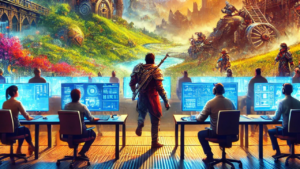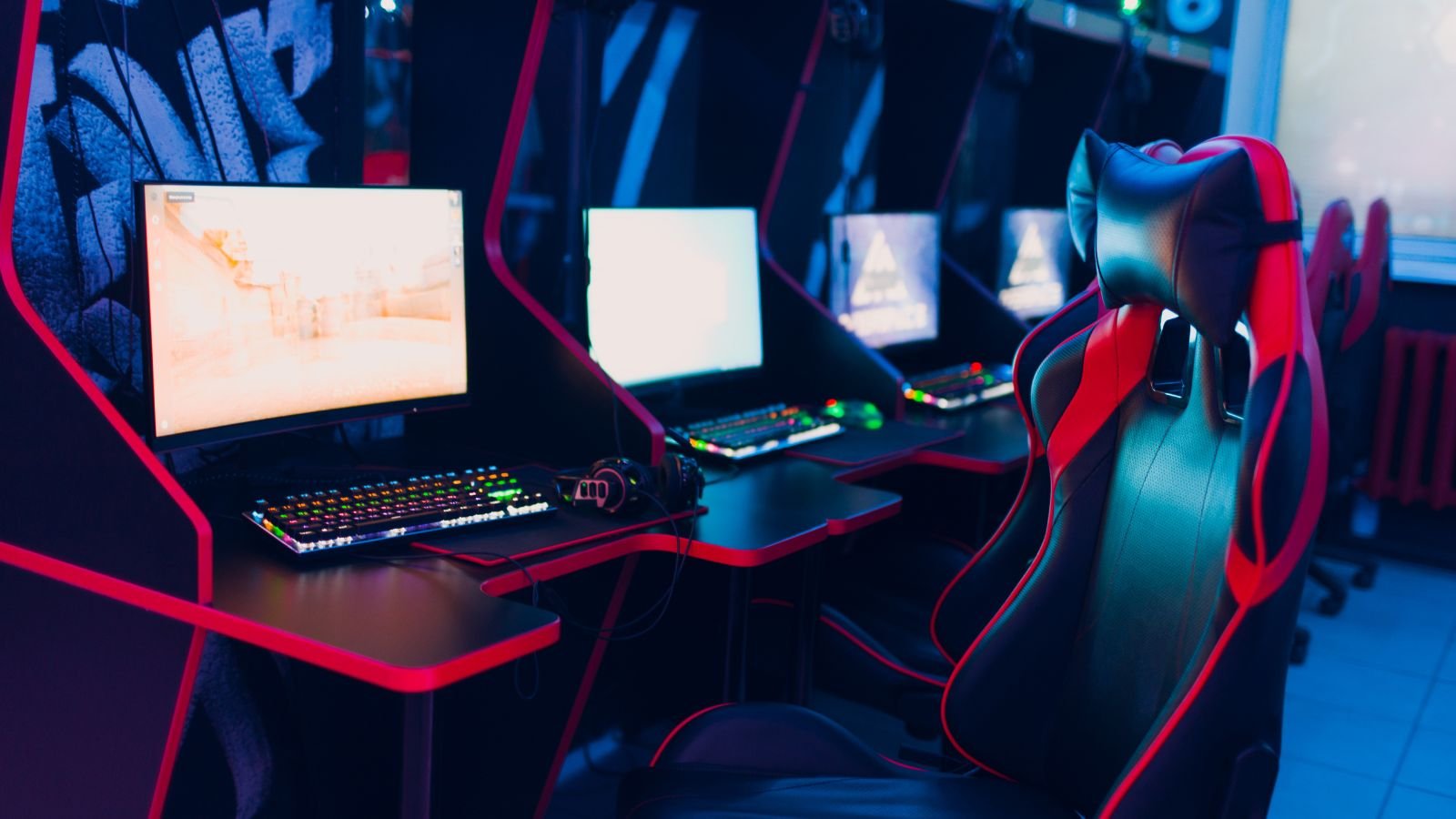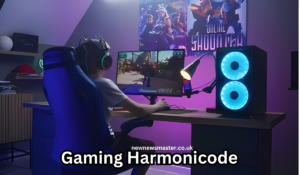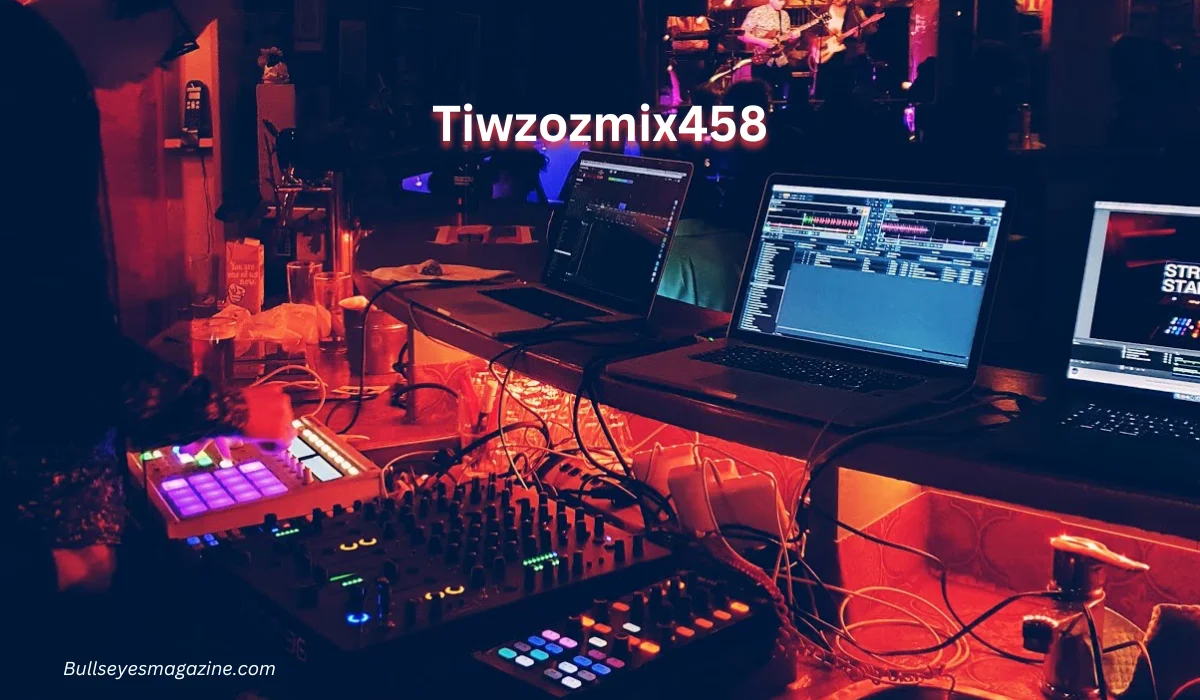In today’s fast-paced digital world, gaming is more than just a hobby; it’s a multi-billion-dollar industry that connects people, sparks creativity, and offers incredible immersive experiences. One of the most exciting and innovative developments in the gaming world today is the emergence of Harmonicode Games. These games represent a fusion of music, code, and interactive experiences that set them apart from traditional gaming genres.
This article will explore Harmonicode Games, their features, specs, and how they are shaping the future of gaming. We’ll also provide a detailed table that compares different harmonicode game specifications and features, offering a clear and insightful look into this new genre.
To Whom It May Concern: 5 Crucial Tips
Table of Contents
ToggleWhat Are Harmonicode Games?
Harmonicode Games are a genre of video games where the mechanics of coding and music are combined to create a truly unique gaming experience. The name itself is derived from two key elements: Harmony (relating to music) and Code (referring to the programming and logic required to interact with the game world). This genre allows players to use music, sound waves, and rhythms to solve puzzles, control characters, or unlock hidden paths within the game.
At its core, harmonicode gaming focuses on two main elements:
- Music Integration: Players interact with the game world using sound as a primary tool for progress, from rhythm-based puzzles to soundtrack-driven challenges.
- Coding Mechanics: Players often need to apply simple coding logic to solve puzzles, program AI behaviors, or trigger events, giving them a deeper sense of involvement in the game development process.
The appeal of harmonicode games lies in their ability to engage both the mind and the senses. By combining these elements, the genre creates games that not only challenge players’ reflexes but also their logical thinking and creativity.
Key Features of Harmonicode Games
When it comes to harmonicode games, the key features that distinguish them from traditional gaming genres include:
- Interactive Sound Design: The game’s soundtrack plays a crucial role in gameplay. Players must adapt to the rhythm or melody to solve challenges, creating an immersive experience where sound is more than just an auditory cue.
- Customizable Music Tracks: Many harmonicode games offer players the chance to compose or modify soundtracks, providing an additional layer of creativity and personalization.
- Code-based Problem Solving: Players often need to use basic coding principles to advance through the game. This could include anything from simple loops and conditionals to more complex algorithms that affect the game world.
- Adaptive Difficulty: The difficulty of the game may change based on the player’s interactions with both the music and the code. If players fail to solve a puzzle or sync with the music, the game might slow down, or the difficulty may rise accordingly.
- Visual and Auditory Synchronization: The visual elements of harmonicode games are often synchronized with the music and sound effects, creating a rich sensory experience. This can include animations that respond to the beat, visual cues that correspond with sound changes, or environmental transformations that occur with rhythm.
- Game Mechanics Based on Music Theory: Some harmonicode games introduce players to music theory concepts, like scales, harmony, rhythm, and tempo, teaching them in an engaging and interactive manner.

How Harmonicode Games Are Shaping the Future of Gaming
Harmonicode Games represent a bold step forward in the gaming industry, blending entertainment with education and creativity. Here’s a closer look at how they are influencing the future of gaming:
- Enhanced Learning Opportunities: By incorporating coding and music theory into the gameplay, harmonicode games serve as an excellent tool for teaching important concepts in an engaging way. These games make learning programming and music theory fun and interactive, which is beneficial for both younger audiences and aspiring developers.
- Immersive and Engaging Gameplay: With sound playing an integral part of gameplay, harmonicode games create a more immersive experience compared to traditional games. Players are not merely reacting to visual stimuli; they must pay attention to audio cues and think critically about how the music affects the game world.
- Cultivating Creativity: The customizable nature of these games allows players to express their creativity. By tweaking musical tracks, modifying code, or adjusting game mechanics, players are empowered to create unique experiences. This has the potential to foster creativity in both game design and other creative industries.
- Accessibility and Inclusion: As these games often rely on simple coding techniques, they make game development and music composition more accessible. Even players with little prior knowledge of coding or music theory can enjoy and learn from harmonicode games.

Table of Specs and Features for Popular Harmonicode Games
Here’s a detailed table comparing the specifications and key features of some popular harmonicode games. This table will help highlight the differences and similarities between them, providing a clearer understanding of what players can expect from each.
| Game Title | Platform | Core Gameplay Mechanic | Music Integration | Coding Element | Difficulty Level | Graphics Style | Customizability |
|---|---|---|---|---|---|---|---|
| Harmonic Conquer | PC, Console | Rhythm-based puzzles | Dynamic soundtrack based on gameplay actions | Code-algorithms to solve puzzles | Medium to Hard | Abstract 2D | Limited (custom soundtracks) |
| Code Symphony | PC, Mobile | Puzzle-solving through code | Music progression based on puzzle completion | Write simple scripts to advance | Easy to Medium | Pixel Art | Full customization of soundtrack |
| Melodic Odyssey | PC, VR | Open-world exploration | Environmental music reacting to player movement | Code NPCs and events | Medium | 3D Adventure | Customizable avatars and music |
| Rhythm Coder | PC, Web | Rhythm-matching with coding | Real-time rhythm and beat syncing | Players code rhythm triggers | Easy to Medium | Minimalistic Design | Limited code changes |
| Symphony Circuit | Console, PC | Racing and coding to beats | Music changes based on track progress | Write algorithms for boosts | Hard | 3D Racing simulation | Customizable car designs |
Examples of Harmonicode Games
1. Harmonic Conquer
Platform: PC, Console Harmonic Conquer is a rhythm-based puzzle game where players must align their actions to the beat of the game’s dynamic soundtrack. As the game progresses, the soundtrack evolves and changes, creating new challenges that players must solve through their understanding of rhythm. Coding comes into play when players need to manipulate sound waves or time-based events to solve the puzzle. The game features abstract 2D graphics that are designed to sync perfectly with the rhythm of the music.
2. Code Symphony
Platform: PC, Mobile In Code Symphony, players embark on a journey through a world built on both music and code. Each puzzle requires players to not only listen to the changing music but also write code to make progress. Whether it’s solving a problem by triggering a musical note or using algorithms to change the environment, this game blends the world of coding with sound seamlessly.
3. Melodic Odyssey
Platform: PC, VR Melodic Odyssey is a fully immersive VR experience where the player explores vast environments that evolve in real-time based on the music being played. The player’s movements through the world trigger changes in the music, and coding is used to influence NPC behaviors or environmental factors. The game offers an open-world experience that encourages creativity in both music composition and game development.
Exploring harmonicode gaming
The Impact of Harmonicode Games on the Industry
The development of harmonicode games signals a shift toward more interactive, educational, and sensory-driven gaming experiences. These games challenge players in new ways, making them not only consumers of content but creators and coders in their own right. As the gaming industry continues to evolve, harmonicode games are expected to pave the way for more hybrid genres that incorporate other forms of creativity, such as visual arts, storytelling, and even dance.
Moreover, harmonicode games play a crucial role in bridging the gap between music and technology, offering musicians a new medium to engage with their audience and developers an opportunity to explore innovative gameplay mechanics.
FAQs
1. What exactly are harmonicode games?
Harmonicode games are a unique genre of video games that combine elements of coding and music to create an interactive gaming experience. In these games, players use sound, rhythm, and music to solve puzzles, program in-game events, or manipulate the environment. The gameplay mechanics often require players to apply basic coding principles to progress or create harmony between the music and the game world.
2. How do harmonicode games incorporate music into gameplay?
Music plays a central role in harmonicode games, often influencing how players interact with the game world. The soundtrack may dynamically change based on player actions or progress. In some games, players must align their actions or solve puzzles to the beat of the music, while others might allow players to compose or modify music tracks as part of the gameplay.
3. Do I need coding experience to play harmonicode games?
While coding knowledge can enhance your experience, many harmonicode games are designed to be accessible even to players without prior coding experience. Most games feature tutorials and guides that introduce players to basic coding principles. These games encourage learning by doing, allowing players to gradually build their coding skills while having fun.
4. Are harmonicode games suitable for beginners?
Yes! Many harmonicode games are beginner-friendly and start with simple challenges that teach basic coding concepts, such as loops, conditionals, and event triggers. As you progress, the difficulty increases, but the core gameplay remains accessible. These games are great for players who are new to coding or music theory, as they introduce these concepts in an engaging and interactive way.
5. What platforms can I play harmonicode games on?
Harmonicode games are available on various platforms, including:
- PC (Windows, macOS)
- Consoles (PlayStation, Xbox)
- Mobile devices (iOS, Android)
- VR platforms** (Oculus Rift, HTC Vive)
Some games may be exclusive to specific platforms, while others are available across multiple systems.

6. Can I create my own music or modify existing tracks in harmonicode games?
Yes! Many harmonicode games allow players to create or modify music tracks as part of the gameplay. Some games feature built-in music creation tools, enabling players to compose their own tracks or remix existing ones to suit their gameplay style. This adds a layer of creativity and personalization, letting you influence the game world through your musical expression.
7. Are harmonicode games educational?
Absolutely! Harmonicode games are an excellent way to learn basic coding principles, music theory, and sound design. They offer an interactive approach to learning, helping players understand how coding and music can work together in a digital environment. These games can be especially beneficial for young players, aspiring developers, and anyone interested in learning more about the intersection of music and technology.
8. What kind of challenges can I expect in harmonicode games?
The challenges in harmonicode games vary depending on the specific title, but they often include:
- Rhythm-based puzzles: Aligning actions or solving problems in sync with the music.
- Coding challenges: Using simple code (like loops and conditional statements) to manipulate in-game elements or progress through the game.
- Music composition: Creating or modifying music tracks to influence the gameplay or solve puzzles.
- Environmental interactions: Navigating worlds where the environment changes in response to sound and music.
9. Can harmonicode games be played by people with no musical background?
Yes, harmonicode games are designed to be accessible to players of all backgrounds. While an understanding of music can enhance the experience, it is not necessary to enjoy these games. Most games feature intuitive controls, tutorials, and adaptive difficulty to ensure that even players with no prior musical knowledge can participate and enjoy the gameplay.
10. Are harmonicode games suitable for all ages?
Harmonicode games can be enjoyed by players of all ages. Many games in this genre feature child-friendly content with simple mechanics, while others may offer more advanced coding and music challenges suitable for older players or those looking for a deeper experience. It’s important to check the game’s rating and description to see if it aligns with the player’s age group.
11. How do harmonicode games compare to traditional rhythm games?
While traditional rhythm games focus solely on music and timing, harmonicode games blend music with coding and problem-solving mechanics. In harmonicode games, players may need to write code or manipulate sound in specific ways to solve puzzles or control in-game actions, making the experience more dynamic and intellectually stimulating compared to traditional rhythm games.
12. What are the educational benefits of playing harmonicode games?
Harmonicode games offer several educational benefits:
- Learning to code: Players can learn programming fundamentals such as loops, conditionals, and event triggers while playing.
- Understanding music theory: Many games introduce concepts like rhythm, harmony, scales, and tempo.
- Improving problem-solving skills: The combination of coding and music challenges players to think critically and develop creative solutions.
- Boosting creativity: The ability to create or modify music tracks and code within the game promotes creative thinking and innovation.
13. Are there any multiplayer harmonicode games?
Yes, some harmonicode games offer multiplayer features where players can work together or compete to solve puzzles, code, or compose music. These multiplayer elements can provide an additional layer of fun and collaboration, making it an excellent option for friends or family members who want to play together.

14. What are some popular examples of harmonicode games?
Some of the popular harmonicode games include:
- Harmonic Conquer (PC, Console)
- Code Symphony (PC, Mobile)
- Melodic Odyssey (PC, VR)
- Rhythm Coder (PC, Web)
- Symphony Circuit (Console, PC)
These games offer a variety of experiences, from rhythm-based puzzles to open-world exploration, all integrated with music and coding mechanics.
15. How can harmonicode games help in learning coding and music?
Harmonicode games serve as an interactive and engaging platform for learning both coding and music. Players practice coding by solving puzzles and manipulating the game world through written code. At the same time, they learn music theory concepts such as rhythm, melody, and harmony by interacting with the in-game music and environment. These games make both fields more accessible and enjoyable, fostering a deeper understanding through gameplay.
Conclusion
Harmonicode Games: Revolutionizing the Future of Gaming are a groundbreaking genre that brings together the worlds of music and coding in a way that no other game genre has before. Through innovative gameplay mechanics, immersive sound design, and educational benefits, these games are not only changing the way we play but also how we learn and create.
As the genre continues to evolve, players can look forward to even more advanced gameplay experiences that integrate coding, music, and creativity into all aspects of gaming. Whether you are an aspiring developer, a music enthusiast, or simply a gamer looking for something new, harmonicode games offer a refreshing and engaging way to interact with the digital world. So, dive in, unleash your creativity, and let the rhythm guide your gaming journey.




